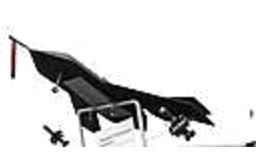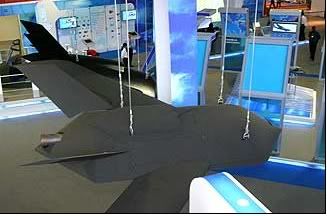UAV & MAV---are we alone?
-
Proxy Aviation Systems Unveils SkyWatcher at AUVSIÂ’s UAV Demo and Unmanned Systems Show in Baltimore
fr www.proxyaviation.com.
Fully-autonomous unmanned aircraft system designed for ISR missions
Germantown, Md. — June 27, 2005 —Proxy Aviation Systems, Inc., a company dedicated to developing fully autonomous, optionally piloted unmanned aircraft systems (UAS), unveiled SkyWatcher, a long endurance, low and medium altitude, multi-payload unmanned aircraft system today at the Association for Unmanned Vehicle Systems International’s (AUVSI) (www.auvsi.org) demonstration of unmanned aerial vehicles at the Webster Field Annex of the Naval Air Station at Patuxent River, Maryland. The company will also be exhibiting at booth #537 at the AUVSI Unmanned Systems Show at the Baltimore Convention Center in Baltimore, Maryland June 28-30.
Proxy AviationÂ’s SkyWatcher is a fully-autonomous, optionally-piloted UAS designed for long endurance, low and medium altitude, multi-payload intelligence, surveillance and reconnaissance (ISR) missions. With advanced capabilities such as single point management of up to 12 air vehicles, network centric cooperative flight in constellation formation and end-user tasking to meet required mission applications, SkyWatcher executes critical missions using fewer resources and personnel than established systems. The systemÂ’s high level of reliability, persistence and survivability enable the system to execute high-end tactical and low-end strategic missions.
The SkyWatcher system consists of four main components: highly autonomous air vehicles; a primary mission-management ground control station; mobile ground control user terminals; and a variety of quick change payloads. This enables the operators to quickly task the system to attain vital, real-time information and immediately react to any situation. The system is designed to execute a wide range of applications such as intelligence, surveillance, and reconnaissance (ISR), battle damage assessment (BDA), urban warfare, communications data relay and other missions.
........ The companyÂ’s mission is to fill a gap in unmanned aviation capability by providing a system that successfully executes both low-end strategic and high-end tactical surveillance missions, requiring fewer personnel and resources than established systems.
All Proxy Aviation demonstrations are in accordance with U.S. export control laws.
About Proxy Aviation Systems
..............s a Delaware corporation, Proxy Aviation is headquartered in Germantown, Maryland. For more information, visit
Will Sg MAV heading to this way?
http://www.proxyaviation.com/product.htm -
LALEE OF Sg
The project acronym is LALEE, which stands for low-altitude long-enduring endurance, but the low is a relative term, meaning that this platformÂ’s projected cruising altitude of 60,000 feet is lower than that of satellite surveillance systems. Endurance is self-explanatory, meaning a long dwell time such as is already demonstrated by the Northrop Grumman Global Hawk unmanned aerial vehicle. Long-enduring is a reference to the DSOÂ’s aim that this platform should be in service for 30 years.......
Singapore/EADS may do spy drone--by Chris Pocock
In the early stages of this project, the DSO(of Sg)http://www.dso.org.sg/home/collaborations/collaborations_overseas.aspx engaged maverick U.S. designer Burt Rutan as a consultant. Rutan’s company, Scaled Composites, has developed its own high-altitude, twin-boom, twin-engine design, the Proteus. It is not known whether Rutan continues to advise the DSO on the LALEE, which is somewhat larger–approximately the wingspan and fuselage length of a Boeing 737, and with an mtow of about 15 tons.
The intelligence, surveillance and reconnaissance (ISR) community will be watching the LALEE development with interest, since it could potentially offer an alternative to the current U.S. dominance of the HALE market, at a time when interest in these platforms is taking off around the world. For instance, at the UAV conference earlier this week, EADS InternationalÂ’s senior vice president Gen. Jean-Georges Brevot noted that France could be expected to introduce a HALE UAV between 2010 and 2015.
fr
http://www.ainonline.com/Publications/asian/asian_04/d3_dronep3.html
Who is Burt Rutan
fr http://www.scaled.com/
Wah!July 27, 2005: Sir Richard Branson (Founder, Virgin Group of Companies) and Rutan to form "The Spaceship Company
Rutan involved in B2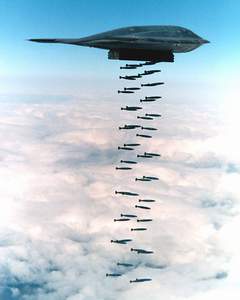
fr http://www.scaled.com/projects/index.html
So Sg may not be the best .But sure we are working with the best! -
LALEE
Professor Lui Pao Chuen 1997* Participated in the conceptualization the Piloted/pilotless air vehicle, LALEE (Low Altitude Long Enduring Endurance) to provide strategic surveillance flying continuously over Singapore.
What is LALEE
1998 * Led a study team in the collaborative effort with Aerospatiale(Poster note:Now known as EADS) in the study of the system requirements for LALEE Appointed Chairman DSO Laboratories.38. A UAV designed for a continuous coverage mission will require the operating cost per flying hour to be very low, below US$1,000, to be affordable. A continuous coverage station will require the flying of about 10,000 hours per year. The capital cost of acquiring the platform and payload, say at US$50m will be overtaken by the operations and maintenance cost after five years of operations. The US Navy is studying the MRE (Multi-Role Endurance) UAV to perform this mission. We have just completed a 3 year long study of LALEE which is an integrated airborne surveillance and communications system designed to provide continuous temporal coverage over a very large area. Providing a task group operating in the littorals with continuous surveillance from the air with this class of UAV will be considerably cheaper than operating current generation of surveillance and communications platforms. The technology is there but whether Navies will to want to invest in this class of UAV will depend on their perceived need for a continuous coverage platform.
fr http://www.mindef.gov.sg/nps/technical/paper1.html
Text of Address by Prof Lui Pao Chuen, Chief Defence Scientist,Singapore.
Naval Platform Technology Seminar 10th May 2001 -
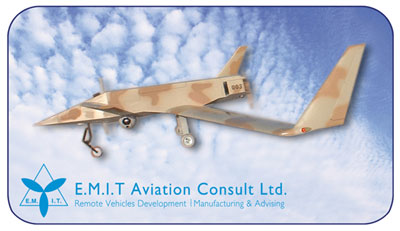
Blue Horizon 2 UAV
fr http://www.israeli-weapons.com/weapons/aircraft/uav/blue_horizon_2/Blue_Horizon_2.htm
Blue Horizon 2 is a joint venture with ST SMART
ZAOBAO 07.10.2001
2.Fantail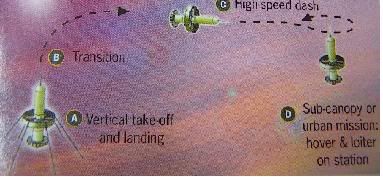
Fantails fr ST
Fr brochure of ST Dynamics some times back.
3.MAV-1 and Fantail fr Janes
Pl read translation fr JDW10.03.2004
http://jczs.sina.com.cn/2004-03-23/1024188965.html -
Re prevoius posting: Burt Rutan is confirmed involved in LALEE design.
http://www.dsta.gov.sg/Home/DisplayPage/ContentPage12.asp?id=847 -
Skyblade2 as seen in Marina S.Portions in different colors
can be dismamtled and carried in big bag.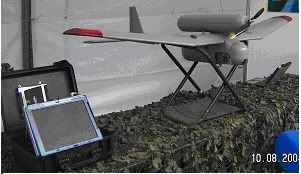

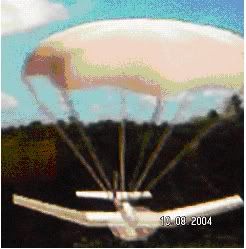
Spiral Landing with parachute.Read the open posting in this thread.
Note the control computer.Can be preprogrammed for mission. -
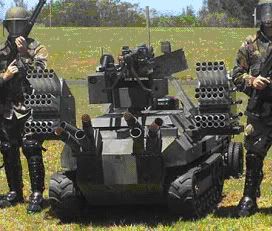
Gladitor for US Marines.
fr http://jczs.sina.com.cn/2005-08-16/0807313432.html
as seen in a recent demo.in US Army testing ground.04082005.
note the links in the bottom.
2.
Carnegie Mellon, United Defense To Provide TUGV's for US Marine Corps
http://www.spacedaily.com/news/robot-05g.html -
US Defense Department's "Unmanned Systems Roadmap 2005-2030''
Through
1.http://www.defensetech.org/archives/001748.html
get this
2.http://www.fas.org/irp/program/collect/uav_roadmap2005.pdf213 pages. Interesting to read
3.http://www.fas.org/sgp/news/secrecy/2005/08/081105.html#3
X-50 Dragonfly Canard Rotor/Wing (CRW)
Voice of an American
fr LINK 1 above.
I just love these articles about the limitations of "UAV's" and autonomous weapon systems in general.
This is just more fear and lothing out of the folks that want to build big deck 100ton. Aircraft Carriers forthe F/35 (CV 77 the George H.W. Bush will be the last carrier to cone in under $10 Billion, maybe?) and sink another $150 Billion in to amphabious warfare ships to accomodate the VC-22 and to build aircraft with out any known mission the F/A-22.
Let's face it the F/A-22's have broken the $200 Million a copy barrier, the VC-22 who knows, but surely it has passed the $150 Million mark and the F-35, which is still in development has passed $100(M) per airplane, average.
While UAV's are still struggling to with add on's hit $10 Millionper airframe. It doesn't take a U.S. Congressman to figure out what the defense industry wants to make.
And I don't think it's by pure chance these same Aero Space Companies are now in ship building business.
Can anyone see a simularity here, Northrup Grumman after buying out Litton Industries who make LPD's for the U.S. Navy have bumped up the price from $835 Million to $1.8 Billion. Of course the new San Antiono class is needed to support the VC-22. Next the VC-22 will need a new LHA's, the LHA (R). The twelve barely used LHD's and LHA's in the fleet are unsuited for the VC-22 and AV-35's, surprise!
Chig ching, another $100 Billion bucks.
UAV's are the future, I just hope we can aford to get there.
ALLONS,
Byron Skinner
"Stewart's Platoon"
Posted by: Byron Skinner at August 16, 2005 02:19 PM -
ST Aero double Skyblade UAV endurance
ST Aero has added an interchangeable payload and proportional module to give the UAV the flexibility to be deployed on a wider range of missions. The Skyblade II, designed with a sensor pod that can be slotted in multiple locations including under the fuselage, is also easier to handle and can be turned around quicker than its predecessor....
ST Aero has not made any changes to the 1.2m (3.9ft) -long wing and the range remains 8km (4.3nm) at a maximum speed of 70kt (130km/h). But the endurance has doubled from 1h to 2h under internal combustion and the option of an electric version with a 1h range is now being offered. -

This is Singapore's local produced MAV lah!STimes 2004-03-07.
2. ..see more Spore smart weapons!
3...u also cant miss this.
4.
Fantail aerodynamic modelling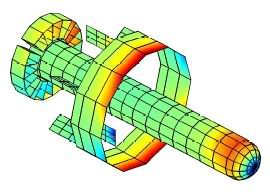
-
1... Mosquito 1.5Micro UAV by Israel Aircraft Industries
Mosquito 1.5 version will weigh 500g, will be capable of flying a 60 minute mission with enhanced 10-20g video camera (two gimbals provide roll control with electronic image stabilization), and carry improved avionics, enabling fully autonomous missions.Wingspan 34cm.JDW 23.02.2005.Micro--UAV.
1
see below for NUS version.
2.
Payload 1.2kg.Speed 72 km.
2.Ha!Ha! Singapore also get similiar one Wing
Aircraft from NUS's Aeronautical Engineering Group.see the secret projects u have never seen.
3.two new modes of flight – one with Birds’ flight and the other one with Rolling Wings (Totally new concept). To find out more... -
Sparrow from Cradance System displayed in AA2004
the Sparrow from our own ST Dynamics.
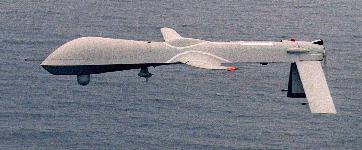
Predator MAE UAV
Cradance Services Pte Ltd, whose principal activities are the provision of consultancy services, development of unmanned technology , is owned by ST, Temasek and DSTA
What is the spec for Sparrow N? -
-
Mini UAV for SAF 1.6 kg .Hand launched.--STimes and TODAY 17.09.2005.
fr Information About IKC2 and Highlights of the Exhibition 2005
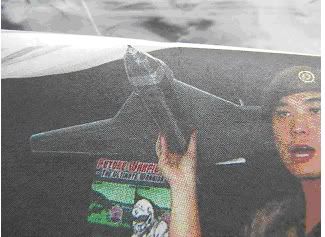
wat a cool UAV!! -
Can someone compile all the UAV manufactured and projects by Singapore? This is because there seems to be too many featured here, which makes it very confusing. Thanks

